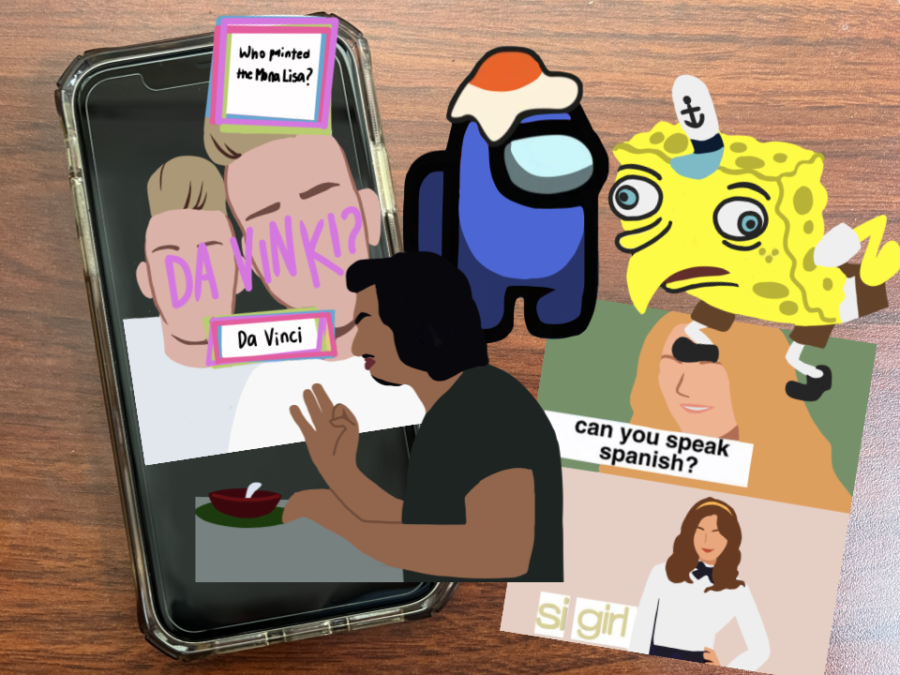Discover Pandipedia
Pandipedia is the world's first encyclopaedia of machine generated content approved by humans. You can contribute by simply searching and clicking/tapping on "Add To Pandipedia" in the answer you like. Learn More
Expand the world's knowledge as you search and help others. Go you!

Improving focus is essential for productivity and overall well-being, especially in a world filled with distractions. Various techniques and lifestyle changes can enhance your ability to concentrate. Here, we explore several effective strategies drawn from multiple sources.
Understanding Attention
Attention is a limited resource and requires selective focus on what’s important. There are several types of attention, including selective, divided, sustained, and executive attention. Selective attention allows individuals to concentrate on one task while ignoring distractions, whereas divided attention deals with multitasking, which is typically less effective and can lead to mistakes[3].
Mindfulness and Mental Training
Practicing mindfulness can significantly sharpen your focus. Mindfulness involves maintaining awareness of the present moment, which has been shown to strengthen attention over time. Regular mindfulness meditation, focusing on breathing, and being present can help recapture mental sharpness[4][1]. Engaging in cognitive training, such as computerized cognitive games, may also improve attention by progressively challenging your mental stamina[4].
Lifestyle Changes
Nutrition

A healthy diet plays a critical role in maintaining cognitive function. Consuming a balanced diet rich in nutrients supports brain health and can enhance focus. Foods recommended include lean proteins, complex carbohydrates, and healthy fats, while mindfulness about eating can prevent distractions stemming from hunger[1][3]. Caffeine, in moderation (from sources like coffee or green tea), can temporarily improve concentration, especially for simple tasks[3].
Sleep
Sleep quality directly affects cognitive function and concentration. Adults generally require between 7 to 9 hours of sleep per night for optimal performance[1][3]. To enhance sleep quality, it’s suggested to establish a healthy bedtime routine: avoid screens an hour before bed, create a relaxing atmosphere, and maintain a consistent sleep schedule[1].
Physical Activity
Regular exercise has been linked to improved attention and mental clarity. Physical activity increases the availability of brain chemicals associated with cognitive function, thereby enhancing focus[4][3]. Aim for 150 minutes of aerobic exercise weekly to boost your mental health and attention[4].
Techniques for Sustained Focus
Pomodoro Technique
The Pomodoro Technique is an effective time management approach that helps maintain focus. It involves working in 25-minute increments followed by short breaks[1][3]. This structured method trains your brain to focus for set periods, helping to combat mental fatigue and enhance productivity.
Managing Distractions
Creating a distraction-free environment is critical for improving focus. This can involve setting aside specific times and locations to work without interruptions from external distractions, such as phones or televisions[2][3]. Keeping a 'distraction to-do list' can also be useful; when distracting thoughts arise, jot them down to address later, allowing you to return your focus to the task at hand[3].
Single-Tasking
Contrary to popular belief, multitasking is generally detrimental to concentration. Focusing on one task at a time allows for deeper engagement and higher productivity[2][3]. By prioritizing tasks and concentrating on completing them before moving to the next, you can significantly improve your ability to maintain attention.
Emotional and Psychological Factors
Stress Management
Acute and chronic stress can severely hinder focus. Stress impairs cognitive function and makes concentrating on tasks more difficult[3]. Using techniques such as deep-breathing exercises, mindfulness, or engaging in calming activities can reduce stress and improve your overall focus.
Assessing Your Focus
It's beneficial to regularly evaluate your level of focus and identify areas for improvement. This could involve self-reflection about how easily you can tune out distractions or track your progress in completing tasks. If you recognize challenges, you can implement specific strategies aimed at improving concentration[2].
Conclusion
Improving focus is a multifaceted process involving lifestyle choices, mindfulness practices, and specific techniques. By understanding the underlying aspects of attention, implementing mindful practices, adjusting dietary and sleep habits, and utilizing structured work techniques, individuals can hone their ability to concentrate in a world full of distractions. By adopting these strategies, you can enhance your focus, productivity, and overall quality of life.
Let's look at alternatives:
- Modify the query.
- Start a new thread.
- Remove sources (if manually added).
- Request a manual search from our human research team.
DIY Birdhouse
A simple beginner project helping to learn the essential woodworking skill of box building[2].
DIY Book Rack
A very easy project that requires cutting a few boards to length and screwing them together[2].
Wooden Coasters
Simple square cutouts that can be finished with polyurethane, making them beginner-friendly[2].
DIY Charcuterie Board
A wooden serving tray that can be shaped with a jigsaw and sealed for food safety[2].
DIY Earring Holder
A basic project using frames that fit within one another, customizable for vertical or horizontal display[2].
DIY Bird Feeder
Requires minimal tools and is easy to make with basic supplies like wood and screws[2].
DIY Key Holder
Features hooks for organizing keys and shelves for small items, easily made in an afternoon[2].
DIY Easy Step Stool
A simple project to help reach higher shelves, requiring common woodworking tools[2].
DIY Cutting Board
An essential kitchen item that beginners can easily craft using untreated hardwood[6].
Let's look at alternatives:
- Modify the query.
- Start a new thread.
- Remove sources (if manually added).
- Request a manual search from our human research team.
Get more accurate answers with Super Search, upload files, personalised discovery feed, save searches and contribute to the PandiPedia.

In preferring weight to strength we more closely follow the course pointed out by the analogy of nature [1].
Alan Stevenson[1]
The more close the analogy between nature and our works, the less difficulty we shall experience in passing from nature to art [1].
Alan Stevenson[1]

Mass, therefore, seems to be a source of stability, the effect of which is at once apprehended by the mind, as more in harmony with the conservative principles of nature [1].
Alan Stevenson[1]
It will readily be perceived that we are in a very different and less advantageous position when we attempt, from such observations of natural phenomena in which weight is solely concerned, to deduce the strength of an artificial fabric capable of resisting the same forces [1].
Alan Stevenson[1]
When we have to do with, and to endeavour to control, those powers of nature that are subject to no calculation, I trust it will be deemed prudent not to omit, in such a case, anything that can without difficulty be applied, and that would be likely to add to the security [1].
Smeaton[1]
Let's look at alternatives:
- Modify the query.
- Start a new thread.
- Remove sources (if manually added).
- Request a manual search from our human research team.

Current Large Reasoning Models (LRMs) can experience significant performance issues when faced with complex puzzles. The study indicates that LRMs experience 'complete accuracy collapse beyond certain complexities' and that they struggle with 'generalizable problem-solving capabilities for planning tasks' as puzzle difficulty increases[1].
Additionally, LRMs are shown to engage in inefficient reasoning processes, often falling into an 'overthinking phenomenon,' where they explore incorrect solutions instead of arriving at correct ones efficiently[1]. This behavior underscores the limitations of LRMs in executing precise computations and reasoning tasks effectively under more complex scenarios.
Let's look at alternatives:
- Modify the query.
- Start a new thread.
- Remove sources (if manually added).
- Request a manual search from our human research team.
The landscape of humor has undergone significant changes in the digital age, particularly with the rise of social media platforms. Humor now permeates various genres of online content, adapting to contemporary societal norms and evolving communication methods. This report explores the multifaceted evolution of humor in social media, focusing on the transformation of memes, the democratization of comedic expression, and the role of humor as a tool for social commentary.
The Transformation of Memes

Memes have become a cornerstone of digital humor, evolving from simple jokes to complex forms of communication. Initially defined by Richard Dawkins in 1976 as cultural ideas that spread and evolve through imitation, memes have become a vital part of online interactions. They encapsulate and express ideas, emotions, and shared experiences in visually appealing formats that bridge generations and cultures[1][3]. Memes facilitate rapid communication and have become essential for engaging with current events, trends, and societal issues. This 'virality' reflects the collective consciousness, allowing memes to resonate widely across different demographics and cultural backgrounds[3].
With the advent of the internet, humorous content can now spread quickly, often reaching millions within hours. This immediacy allows memes to spark conversations, debates, and, in some cases, societal change[3]. Notably, humorous memes have often served as a medium for social commentary, addressing relevant issues and generating discussions that might not occur in formal settings[4][6]. They can encapsulate complex ideas through humor, making them accessible to diverse audiences.
The Democratization of Comedy
The digital era has democratized humor in unprecedented ways. Traditionally, comedians relied on mainstream platforms like television and film to reach their audiences. However, social media platforms like YouTube, TikTok, and Instagram have enabled any individual with a smartphone to share comedic content, bypassing traditional media gatekeepers. This change has given rise to a new generation of comedians, allowing a broader diversity of voices and perspectives to emerge[2][4].
This shift has transformed not only who gets to be funny but also the type of humor that thrives online. Comedy now often includes irony, sarcasm, and self-deprecation, appealing to internet-savvy audiences familiar with these forms[4]. Social media has created new formats for humor, such as the one-liner on Twitter or the short, engaging skits on TikTok, encouraging brevity and punchiness in comedic expression[2][6]. As a result, humor has adapted to be faster and more relatable to rapidly changing social contexts.
Humor as a Tool for Social Commentary

In an increasingly polarized world, humor serves as a powerful tool for social commentary and activism. Memes, in particular, provide a unique way to challenge authority and question societal norms. Satirical and parody-based humor has gained popularity, allowing individuals to express their opinions and frustrations creatively[3]. The internet has amplified the reach and impact of this humor, allowing it to resonate beyond its immediate audience.
For instance, memes that address political events or social issues can quickly gain traction, influencing public opinion and even driving social movements[1][3]. The ability of humor to address complex topics in a digestible format fosters community engagement and encourages dialogue around pressing issues. As such, humor is not merely entertainment—it's a means of forging connections and building relationships among individuals who share similar experiences or viewpoints.
Humor and Marketing
Recognizing the influence of humor on consumer behavior, brands have increasingly leveraged memes and humorous content in their marketing strategies. Advertisers have tapped into the viral nature of memes to create relatable content that resonates with younger audiences, facilitating brand awareness and engagement[6]. Memes can make brands appear more approachable and human, strengthening connections with consumers[2][6]. This approach has transformed modern marketing landscapes, showing that humor can be an effective tool for branding and reaching target demographics.
The Impact of Social Media on Humor

The interplay between social media and humor has developed a unique online culture. Memes and humorous content often reflect the collective mindset of a generation, capturing current trends, societal issues, and the general humor of the time. This phenomenon allows humor to transcend cultural barriers, making it a universal language that fosters connection[1][3][5]. Notably, memes have influenced segments of culture, from discussions about mental health to broader societal movements, demonstrating their significance beyond mere comedy[6].
The rapid evolution of platforms and formats means that humor is continuously changing, as creators adapt to new tools and styles that resonate with audiences. Platforms like TikTok encourage dynamic and innovative approaches to comedic expression, further enriching the digital humor landscape[2].
Conclusion
The evolution of humor in social media is a reflection of broader societal changes. Memes have transformed from simple internet jokes into powerful cultural phenomena that influence communication and foster connections across diverse groups. The democratization of comedy allows voices from various backgrounds to emerge, enhancing the richness of humor available online. Simultaneously, humor serves as an effective means for social commentary, enabling individuals to address complex issues with creativity and relatability.
As the digital landscape continues to evolve, so too will the expressions of humor. It remains an essential component of our lives, offering relief, connection, and commentary in a rapidly changing world. In this way, humor has not only adapted but thrived as a vital force in shaping social interactions and cultural narratives in the digital age.
Let's look at alternatives:
- Modify the query.
- Start a new thread.
- Remove sources (if manually added).
- Request a manual search from our human research team.
Let's look at alternatives:
- Modify the query.
- Start a new thread.
- Remove sources (if manually added).
- Request a manual search from our human research team.
Get more accurate answers with Super Search, upload files, personalised discovery feed, save searches and contribute to the PandiPedia.

To overcome procrastination, it's effective to understand its triggers, such as boredom or fear of failure, and address them directly. Strategies include making tasks more engaging, setting specific deadlines, and breaking projects into smaller, manageable steps to reduce overwhelm[1][2][3]. Additionally, establishing a schedule and eliminating distractions, particularly digital ones, can enhance focus and accountability[3][4].
It's also helpful to reframe tasks using positive language, shifting from 'I have to' to 'I want to,' which can motivate action. Rewarding yourself after completing tasks can reinforce positive habits and maintain motivation[5][6]. Recognizing and challenging irrational beliefs about your abilities can further support this process[2][3].
Let's look at alternatives:
- Modify the query.
- Start a new thread.
- Remove sources (if manually added).
- Request a manual search from our human research team.
Let's look at alternatives:
- Modify the query.
- Start a new thread.
- Remove sources (if manually added).
- Request a manual search from our human research team.

Convergent boundaries are vital regions where tectonic plates move toward each other, leading to a variety of geological phenomena that shape the Earth's surface. This report synthesizes essential information on how tectonic plates interact at these boundaries, including the processes of subduction and collision, and the geological features that result.
Types of Convergent Boundaries
There are three primary types of convergent boundaries distinguished by the nature of the plates involved: oceanic-oceanic, oceanic-continental, and continental-continental. Each type of boundary exhibits unique characteristics and geological activities.
Oceanic-Continental Convergence
:max_bytes(150000):strip_icc():format(webp)/Oceanic-continental_destructive_plate_boundary_LABELED1-56c559c43df78c763fa341bf.png)
When an oceanic plate converges with a continental plate, the denser oceanic plate is typically subducted beneath the more buoyant continental plate. This process leads to the formation of features such as deep ocean trenches and volcanic arcs. For instance, the Nazca Plate subducts beneath the South American Plate, leading to the formation of the Andes Mountains and associated volcanic activity[1][2][6]. The subduction of the oceanic lithosphere into the mantle initiates melting, which generates magma that rises to the surface, forming volcanoes along the continental margin[5][9].
Oceanic-Oceanic Convergence
:max_bytes(150000):strip_icc():format(webp)/b8f413db-8bdd-44b8-a0c2-9cc209028ede-56c559863df78c763fa33ff9.png)
In oceanic-oceanic convergent boundaries, one oceanic plate is subducted under another, usually the older and denser plate. This subduction can create deep ocean trenches and a chain of volcanic islands known as island arcs. Examples include the Aleutian Islands and the Mariana Islands, formed as a result of one plate descending into the mantle due to its higher density[3][8][10]. The subducting plate also melts, contributing to volcanic activity in the overriding oceanic plate, leading to characteristics similar to those found in oceanic-continental subduction zones.
Continental-Continental Convergence
:max_bytes(150000):strip_icc():format(webp)/Continental-continental_destructive_plate_boundary_LABELED-56c55a0e3df78c763fa34493.png)
When two continental plates converge, neither plate is subducted due to their buoyant nature. Instead, they collide and crumple, causing intense deformation and resulting in the formation of large mountain ranges. The Himalayas are a prime example of such a collision, resulting from the convergence of the Indian Plate with the Eurasian Plate. This boundary type is known for producing significant mountain uplift and extensive earthquake activity without accompanying volcanism, as there is no subduction of oceanic lithosphere to generate magma[2][4][7].
Geological Features and Phenomena
Convergent boundaries are characterized by several geological features that arise from the interactions of tectonic plates.
Subduction Zones
:max_bytes(150000):strip_icc():format(webp)/GettyImages-83182638-5c4cd0f246e0fb0001a8e75c.jpg)
At subduction zones, the descent of the oceanic plate creates deep oceanic trenches, the deepest parts of the oceans. The Mariana Trench is the most significant example of this phenomenon, reaching depths of nearly 11 kilometers[6][10]. As the oceanic plate subducts, it drags the ocean floor down, resulting in compression and the eventual formation of features like accretionary wedges, where sediments from the ocean floor accumulate at the boundary[9][10].
Earthquakes and Volcanoes
These tectonic interactions frequently lead to powerful earthquakes. Most of the world’s most significant earthquakes occur at or near convergent boundaries due to the immense pressure that builds up as the plates grind against each other before suddenly releasing, consequently generating seismic waves[3][6][7][8]. Volcanism is commonly associated with convergent boundaries, particularly in oceanic-continental and oceanic-oceanic scenarios, where magma produced by the melting of subducting slabs ascends through the crust, often leading to volcanic eruptions[2][3][6][9].
Mountain Building
The collision of continental plates leads to what is known as orogenesis, a process that results in the formation and uplift of mountain ranges. The structural integrity of continental crust makes it challenging for mountains to subside into the mantle, which leads to the horizontal shortening and thickening of the crust, giving rise to high ranges such as the Himalayas and the Alps[1][5][8][9].
Conclusion
Convergent plate boundaries play a crucial role in the dynamic processes of Earth's geology. Through processes such as subduction and collision, these boundaries contribute to the formation of significant geological features, including mountain ranges, oceanic trenches, and volcanic islands. The intense interactions at these boundaries not only reshape the earth's surface but also produce some of the planet's most powerful seismic events, underlining the ongoing transformation of our planet.
Let's look at alternatives:
- Modify the query.
- Start a new thread.
- Remove sources (if manually added).
- Request a manual search from our human research team.

To choose DIY lighting effectively, start by planning your lighting scheme early in the kitchen design process. Identify the types of lighting you need—task, ambient, and accent—and ensure they are layered to suit different functions and moods throughout the day. It’s important to finalize light placements based on kitchen layouts, considering areas requiring focused light like counters and dining spaces[1][2].
When selecting DIY fixtures, consider your desired style and budget. There are many options available, from chandeliers to pendant lights, which can be tailored to match your decor while saving costs[3][5]. Ensure to account for safety and functionality, especially around water sources[2][4].
Let's look at alternatives:
- Modify the query.
- Start a new thread.
- Remove sources (if manually added).
- Request a manual search from our human research team.
